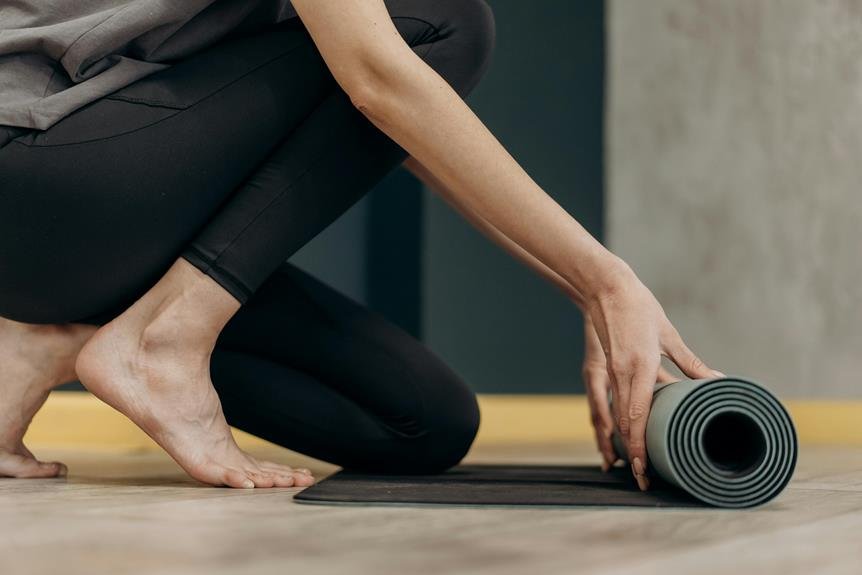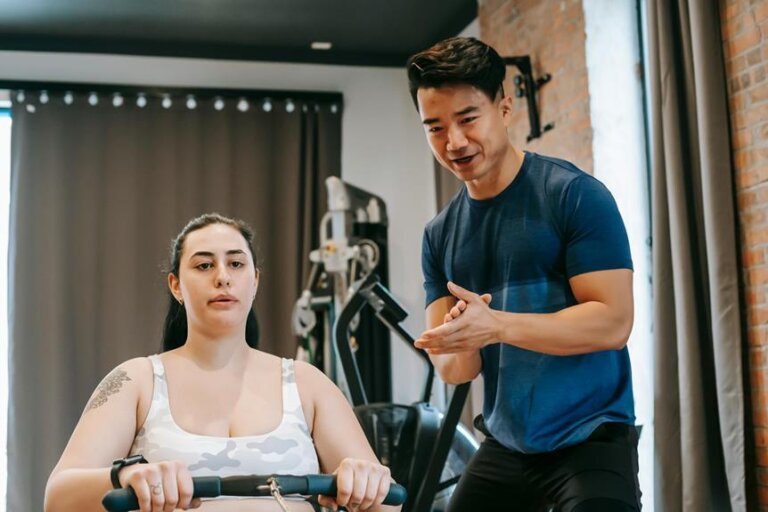Incorporating Yoga Into Your Daily Exercise Routine
Have you ever considered how adding yoga to your daily exercise routine could transform your overall fitness experience?
With its focus on strength, flexibility, and mindfulness, incorporating yoga can offer a holistic approach to physical well-being.
By exploring different yoga poses and finding a balance between yoga and other forms of exercise, you might discover a new level of harmony in your fitness journey.
Benefits of Adding Yoga to Exercise
Incorporating yoga into your daily exercise routine can significantly enhance flexibility, strength, and mental focus. Yoga involves a series of poses and stretches that target different muscle groups, helping to improve your overall flexibility. By holding these poses, you not only increase flexibility but also build strength in various areas of your body. The practice of yoga also emphasizes the connection between breath and movement, promoting mental focus and mindfulness.
Additionally, yoga can be a great complement to other forms of exercise. It can help prevent injuries by improving your range of motion and correcting imbalances in your muscles. The focus on proper alignment in yoga poses can also translate into better posture throughout your day. Moreover, the relaxation techniques incorporated in yoga, such as deep breathing and meditation, can reduce stress levels and promote a sense of calm.
Tips for Starting Your Yoga Practice
Starting your yoga practice can be made easier with some simple yet effective tips.
First, find a quiet and comfortable space where you can practice without distractions. This could be a corner of your living room, a serene spot in your backyard, or even a dedicated yoga studio.
Next, invest in a good quality yoga mat that provides the right amount of cushioning and grip to support your practice. It's essential to wear comfortable clothing that allows you to move freely and doesn't restrict your movements.
Additionally, start with beginner-friendly yoga sequences or classes to build a strong foundation before moving on to more advanced poses. Remember to focus on your breath throughout the practice to help you stay present and calm.
Yoga Poses for Daily Routine
For an effective daily yoga routine, consider incorporating poses that target different muscle groups and promote flexibility and relaxation. Start your routine with the Mountain Pose (Tadasana) to center yourself and improve posture.
Transition into the Downward-Facing Dog (Adho Mukha Svanasana) to stretch your hamstrings and shoulders while building upper body strength.
Move into the Warrior Pose sequence (Virabhadrasana I, II, III) to strengthen your legs, core, and arms.
Include the Plank Pose to engage your core muscles and improve stability.
Follow up with the Bridge Pose (Setu Bandhasana) to open up your chest and stretch your spine.
Wind down your routine with the Child's Pose (Balasana) to relax your back muscles and calm your mind.
Remember to focus on your breath throughout the practice to enhance relaxation and mindfulness. These poses, when done consistently, can help you improve strength, flexibility, and overall well-being in your daily routine.
Combining Yoga With Cardio Workouts
To enhance the effectiveness of your workouts, consider blending yoga with cardio exercises for a well-rounded fitness routine. Combining yoga with cardio workouts offers a multitude of benefits for your overall health and well-being. Cardio exercises, such as running, cycling, or aerobics, help improve cardiovascular health, burn calories, and increase endurance. When paired with yoga, which focuses on strength, flexibility, and mindfulness, you create a balanced workout regimen that targets different aspects of fitness.
Integrating yoga into your cardio routine can also help reduce the risk of injuries by improving flexibility and enhancing muscle recovery. Yoga poses like downward dog or pigeon pose can stretch and strengthen muscles, complementing the high-impact nature of cardio activities. Additionally, practicing yoga can aid in reducing stress and promoting relaxation, which is beneficial for both your physical and mental health.
Try incorporating a yoga session before or after your cardio workouts to warm up or cool down, respectively. This combination won't only elevate your fitness level but also provide a holistic approach to your exercise routine.
Creating a Balanced Yoga Schedule
Consider scheduling your yoga sessions strategically to ensure a well-rounded practice that targets various aspects of your physical and mental well-being. Aim to incorporate a mix of different yoga styles throughout your week to challenge your body in diverse ways.
For example, you could plan for a Vinyasa flow class on Mondays to build strength and flexibility, followed by a restorative session on Wednesdays to focus on relaxation and stress relief. Consider adding a session of Yin yoga on Fridays to work on deep stretching and holding poses for longer periods.
In addition to varying yoga styles, think about balancing the intensity of your sessions. Mix dynamic, active practices with more gentle, passive ones to prevent burnout and allow for adequate recovery. Alternating between challenging and restorative classes can help you maintain a sustainable yoga routine without overexerting yourself.
Lastly, don't forget to schedule rest days to give your body the time it needs to recuperate and prevent injury. By creating a balanced yoga schedule, you can optimize the benefits of your practice and promote overall well-being.
Frequently Asked Questions
Can Yoga Help With Specific Health Conditions or Injuries?
Yoga can be beneficial for specific health conditions or injuries. Its gentle movements and mindful breathing can aid in improving flexibility, strength, and overall well-being. Consult with a healthcare provider or a yoga instructor for guidance.
How Can I Incorporate Mindfulness and Meditation Into My Yoga Practice?
To incorporate mindfulness and meditation into your yoga practice, focus on your breath, stay present in each movement, and set aside time for quiet reflection before or after your session. Embrace the stillness within.
Is There a Recommended Time of Day to Practice Yoga for Optimal Benefits?
For optimal benefits, practice yoga at a time that aligns with your energy levels and schedule. Morning sessions can invigorate you, while evening practices may help you unwind. Find what suits you best.
Are There Any Dietary Recommendations for Those Who Practice Yoga Regularly?
For optimal benefits when practicing yoga regularly, focus on a balanced diet. Incorporating whole foods, plenty of fruits and veggies, and staying hydrated can support your yoga practice. Remember to listen to your body's needs.
How Can I Modify Yoga Poses for My Individual Fitness Level or Body Limitations?
Listen to your body's signals during yoga. Adjust poses to match your fitness and body needs. Focus on proper alignment and breathing. Consult with a yoga instructor for tailored modifications that suit your individual limitations.
Conclusion
Incorporating yoga into your daily exercise routine can bring numerous benefits, such as increased flexibility, strength, and relaxation.
By starting with simple poses and gradually adding more challenging ones, you can improve your overall fitness level.
Combining yoga with cardio workouts can create a well-rounded exercise routine that targets both physical and mental health.
Remember to listen to your body and create a balanced schedule that works for you.
Keep up the good work!






